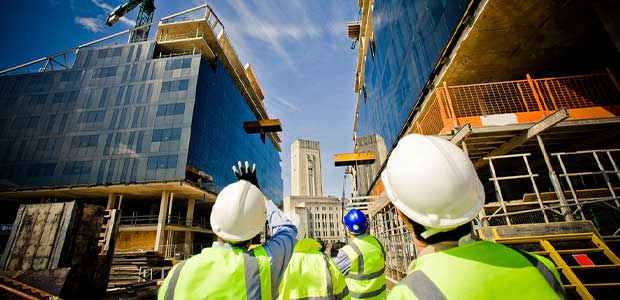
The Most Common Injuries in Construction, and The Potential for Traumatic Brain Injuries
Between 2003 and 2010, 2,210 construction workers died due to a traumatic brain injury.
- By Joe Brandel
- Dec 23, 2022
Construction workers face some of the greatest risks for injuries on the job. Those in the industry have a higher risk of both fatal and non-fatal traumatic brain injuries compared to all other industries in the U.S. Between 2003 and 2010 alone, a total of 2,210 construction workers died due to a traumatic brain injury (TBI), representing 25 percent of all construction fatalities.
While there’s been an increased focus on safety and workers’ protection, the nature of the construction industry means that workers will always face some level of risk. OSHA pinpointed the four leading types of hazards that workers confront, including falls, being struck by an object, electrocution and being caught in between two or more objects.
For several of these hazards, the way in which accidents occur is often cause for concern. Depending on how an accident takes place, workers can potentially be at risk of traumatic brain injuries. Here’s how:
Falls, Slips and Trips
On a jobsite, falls are categorized to include both slips and trips, and falls from heights. The majority of falls from heights occur due to improper mounting and dismounting from equipment, uneven surfaces, improper ladder use, and the lack of properly employing fall protection equipment. Slips and trips are primarily caused by spills, leaks, or misplaced items. Despite the numerous regulations and protections in place, construction workers encounter a variety of opportunities for accidents on-site. From scaffolds without proper guardrails and defective ladders to roofing hazards, many of these accidents are caused by improper training and equipment.
Even without increased elevation, construction workers can still face potentially serious injuries from slips and trips. Environmental factors such as snow or rain, debris or open holes can all lead to slips, which can lead to traumatic brain injuries. According to the U.S. Bureau of Labor Statistics, falls, slips and trips were the leading cause of fatalities in the construction industry, accounting for 37.9 percent of all fatalities from 2015-2019.
Falling Objects
Prior to 2020, being struck by an object was the third leading cause of illness and injury involving days away from the job, accounting for 16.7 percent of cases in 2020. These types of accidents include moving objects striking a worker, workers striking against an object or being thrown into an object, being caught between objects and more.
Falling or flying objects are particularly common types of struck-by accidents. More than half of struck-by fatalities (52%) from 2011-2015 were caused by being struck by an object or equipment. Improperly bracing structures or placing loads on a concrete structure that hasn’t undergone a safety check are just some of the ways that these accidents can occur, but there are a number of scenarios that place construction workers at risk.
Why It Matters
The reason why these accidents can be especially dangerous is when workers hit their head at an angle, whether from falling or being struck by an object. In most instances, people do not fall in a straight line. Similarly, when workers are struck by falling or moving objects, they typically glance off of their helmet at an angle.
During accidents, heads are typically hit at an angle, similar to the way a tennis ball hits the ground after being hit by a racket. When your head hits something at an angle, it exposes the head to rotational motion, a combination of rotational energy (angular velocity) and rotational forces (angular acceleration). This can result in shearing and/or stretching of the brain tissue, increasing the risk of TBIs from impact.
Furthermore, most helmets today are designed for – and do a good job of – protecting the wearer from absorbing linear impacts. Yet statistics have shown that it is more common to fall or be struck by an object at an angle in accidents. Given our brains are especially susceptible to rotational forces, it’s critical that construction workers have the appropriate tools to protect themselves.
Increased awareness of safety protocols and training, as well as the risks of traumatic brain injuries from common accident scenarios is critical to keep workers safe.